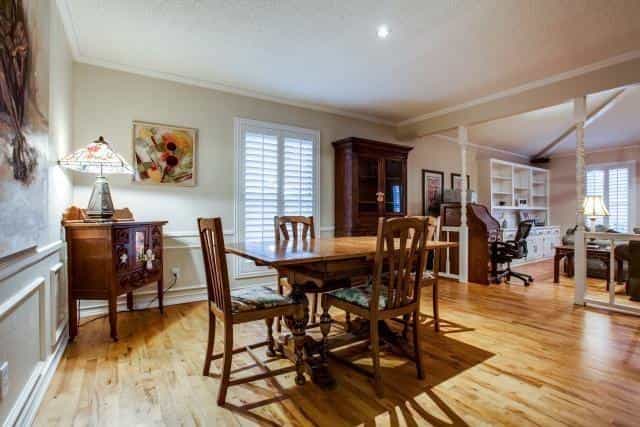What is the advantage of Medication-Assisted Treatment recovery housing?
MAT recovery housing is a type of recovery residence that is specifically designed to support people who are receiving medication-assisted treatment (MAT) for their substance use disorder. MAT is a combination of medication and counseling that has been shown to be very effective in helping people to achieve and maintain sobriety.
There are several advantages to MAT recovery housing:
- Reduced risk of relapse: MAT can help to reduce cravings and withdrawal symptoms, which can make it easier for people to stay sober. MAT recovery housing provides a supportive environment where people can access MAT and receive counseling and other support services.
- Increased treatment adherence: People who live in MAT recovery housing are more likely to adhere to their MAT treatment plan. This is because they have access to support and accountability from other residents and staff.
- Improved social and vocational functioning: People who live in MAT recovery housing often report improved social and vocational functioning. This is likely due to the fact that they are living in a supportive environment where they are surrounded by people who are also in recovery.
- Reduced criminal recidivism: People who live in MAT recovery housing are less likely to re-offend. This is likely because they are more likely to be employed and have stable housing.
Overall, MAT recovery housing can be a valuable resource for people who are receiving MAT for their substance use disorder. It can help them to reduce their risk of relapse, increase their treatment adherence, improve their social and vocational functioning, and reduce their chances of re-offending.
Here are some specific examples of how MAT recovery housing can support people in their recovery:
- Residents can bring MAT to the housing facility. This can make it more convenient and less time-consuming for residents to get their medication.
- Residents can participate in group therapy and other support groups that are specifically tailored to people who are on MAT. This can help residents to learn from each other and develop coping skills.
- Residents can build supportive relationships with other residents who are also on MAT. This can provide them with a sense of community and accountability.
There are a number of drugs that can be used to help people overcome substance use disorder (SUD). These drugs are known as medication-assisted treatment (MAT).
MAT is a combination of medication and counseling that has been shown to be very effective in helping people to achieve and maintain sobriety.
The specific drugs that are used in MAT vary depending on the type of SUD being treated. However, some of the most common MAT medications include:
- Opioid use disorder: Methadone, buprenorphine, naltrexone
- Alcohol use disorder: Naltrexone, acamprosate, disulfiram
MAT medications work in a variety of ways to help people overcome SUD. For example, some MAT medications block the effects of the addictive drug, while others help to reduce cravings and withdrawal symptoms.
MAT is not a cure for SUD, but it can be a very effective tool for helping people to achieve and maintain sobriety. MAT is often used in conjunction with counseling and other support services to provide people with the best possible chance of success.
Here is a brief overview of some of the most common MAT medications:
- Methadone: Methadone is a long-acting opioid that is used to treat opioid use disorder. Methadone helps to reduce cravings and withdrawal symptoms, and it also blocks the effects of other opioids. Methadone is typically taken once a day under the supervision of a healthcare provider.
- Buprenorphine: Buprenorphine is a partial opioid agonist that is also used to treat opioid use disorder. Buprenorphine is similar to methadone in that it helps to reduce cravings and withdrawal symptoms. However, buprenorphine is also less likely to cause overdose than methadone. Buprenorphine is typically taken as a daily tablet or film.
- Naltrexone: Naltrexone is a medication that is used to treat opioid use disorder, alcohol use disorder, and gambling addiction. Naltrexone blocks the effects of opioids and alcohol, which can help to reduce cravings and prevent relapse. Naltrexone is typically taken as a daily pill.
- Acamprosate: Acamprosate is a medication that is used to treat alcohol use disorder. Acamprosate helps to reduce cravings for alcohol and improve alcohol tolerance. Acamprosate is typically taken as a three-times-daily tablet.
- Disulfiram: Disulfiram is a medication that is used to treat alcohol use disorder. Disulfiram causes a reaction when combined with alcohol, which can cause unpleasant symptoms such as nausea, vomiting, and headache. This reaction can help to deter people from drinking alcohol. Disulfiram is typically taken once a day as a tablet.
If you are considering MAT for the treatment of your SUD, it is important to talk to your doctor about the risks and benefits of the different medications that are available. Your doctor can help you to choose the right medication for your individual needs and make sure that you are taking it safely and effectively.
These studies have all found that MAT recovery housing can be an effective way to reduce relapse, recidivism, unemployment, and improve quality of life for people who are receiving MAT for their substance use disorder.
It is important to note that these studies are all relatively new, and more research is needed to confirm their findings. However, the existing evidence suggests that MAT recovery housing can be a valuable resource for people who are seeking to achieve and maintain sobriety.
These studies have all found that MAT recovery housing can be an effective way to reduce relapse, recidivism, unemployment, and improve quality of life for people who are receiving MAT for their substance use disorder.
“Medication-Assisted Treatment and Recovery Homes: A Feasibility Study,” Miller, L. K., Rosenheck, R. A., Drake, R. E., & Tsemberis, S.; Journal of Substance Abuse Treatment, 2013.
Web link: https://www.ncbi.nlm.nih.gov/pmc/articles/PMC9149684/
“The Role of Recovery Housing During Outpatient Substance Use Treatment,” Grella, C. E., Joshi, V., & Hser, Y.-I. Drug and Alcohol Dependence, 2014.
Web link: https://pubmed.ncbi.nlm.nih.gov/34657785/
“Lived experiences of Oxford House residents prescribed medication-assisted treatment,” Osatuke, K., Clifasefi, L., & Paone, D., Substance Use & Misuse, 2023.
Web link: It is important to note that these studies are all relatively new, and more research is needed to confirm their findings. However, the existing evidence suggests that MAT recovery housing can be a valuable resource for people who are seeking to achieve and maintain sobriety.
“Medication assisted therapy and recovery homes,” Drake, R. E., O’Connell, M. J., Hasin, D. S., & Rosenheck, R. A., Psychiatric Services, 2011.Web link:https://www.ncbi.nlm.nih.gov/pmc/articles/PMC9149684/



